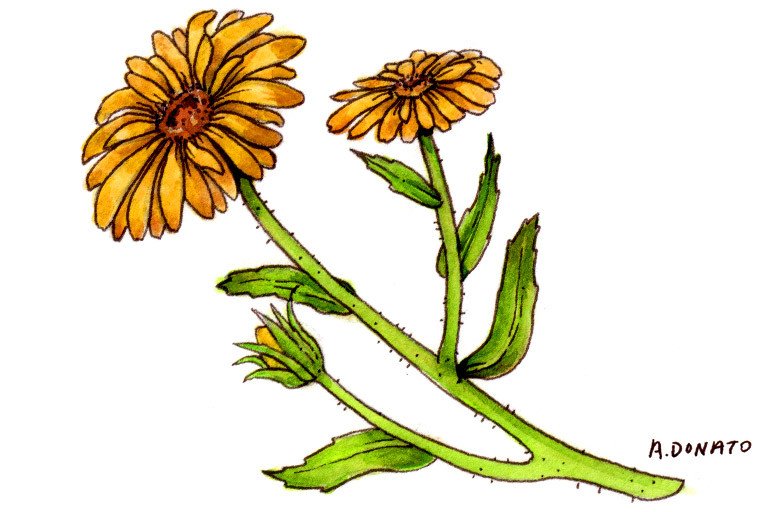
Common Names
- Gold-bloom
- Marigold
- Marybud
- Pot Marigold
For Patients & Caregivers
Tell your healthcare providers about any dietary supplements you’re taking, such as herbs, vitamins, minerals, and natural or home remedies. This will help them manage your care and keep you safe.
What is it?
Calendula, also known as marigold, is a plant related to the daisy family. Its leaves and flowers are used to treat different issues. Calendula comes as creams and ointments to soothe irritated skin. It also comes as capsules, extracts, and teas.
Fresh calendula flower petals are used in salads. Dried petals are used to add color to soups and stews.
What are the potential uses and benefits?
Calendula is used to:
- Treat small cuts and burns
- Soothe irritated skin
- Reduce skin inflammation (swelling)
Calendula also has other uses that haven’t been studied by doctors to see if they work.
It’s generally safe to use calendula in food and tea. But talk with your healthcare provider before taking calendula supplements.
Herbal supplements are stronger than the herbs you would use in cooking. They can also affect how your other medications work. For more information, read the “What else do I need to know?” section below.
What are the side effects?
Side effects of using calendula may include:
- Allergic reactions
What else do I need to know?
- Do not take calendula if you’re pregnant or breastfeeding. Scientists haven’t studied how calendula may affect your pregnancy or breast milk.
- Do not take calendula if you’re allergic to plants in the daisy family.
For Healthcare Professionals
Scientific Name
Clinical Summary
Derived from the flower of the marigold plant, calendula is used topically for wound healing (1). Major constituents of the leaves and stems include lutein and beta-carotene (2). Preclinical studies have demonstrated anti-inflammatory (3), antioxidant (4), antimicrobial (5), and cytotoxic effects (9) (10). Animal models also suggest photo- and cardioprotective properties (15) (16).
An herbal formulation containing calendula appeared to reduce acute otitis media (7) (8). Other studies suggest benefit with prophylactic topical calendula for radiation dermatitis (11) (13), diabetic foot and venous leg ulcers (23) (24), vaginal candidiasis (26), and episiotomy pain (29) (30). Calendula-containing rinse may help chemotherapy-induced stomatitis (17), but data are mixed on its effects on treatment-induced mucositis (27) (31) (32). Larger studies are needed to confirm these observations.
Purported Uses and Benefits
- Wounds
- Rashes
- Inflammation
Mechanism of Action
Triterpenoids present in calendula have anti-inflammatory and antiviral properties (3) (6). Photoprotective effects with topical gel formulations are attributed to improvements in collagen synthesis in the subepidermal connective tissue (15). Calendula also modulates antioxidant and anti-inflammatory pathways via Akt and Bcl2 activation, and downregulates of TNF-alpha (16). Essential oil derived from its flowers exhibit sun-protective activity (19), and prevent UVB-induced skin alterations (20). Accelerated burn healing may occur via increased collagen-hydroxyproline and hexosamine, two bioindicators of wound healing (4).
Contraindications
Calendula should be avoided during pregnancy and lactation because safety data are lacking (1).
Adverse Reactions
Calendula is known to cause allergic reactions (12).